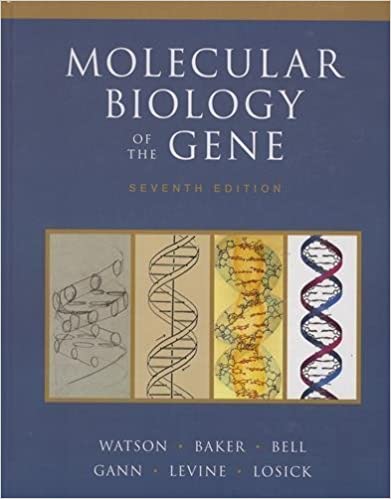
Molecular Biology of the Gene 7th Edition by Richard Losick, James Watson, Michael Levine, Tamara Baker, Alexander Gann
Edition 7ISBN: 9780321762436
Molecular Biology of the Gene 7th Edition by Richard Losick, James Watson, Michael Levine, Tamara Baker, Alexander Gann
Edition 7ISBN: 9780321762436 Exercise 11
Researchers studying the torpedo model of eukaryotic termination wanted to test Rtt103 and Rat1 positioning on transcribed genes. To do this, they performed a chromatin immunoprecipitation assay (ChIP) assay using tagged Rat1 protein. (See Chapter 7 for a review of ChIP.) After shearing chromatin from wild-type cells, they immunoprecipitated Rat1 using antibodies specific to the tag. They PCR-amplified the DNA of interest associated with Rat1 using different sets of primers specific for highly transcribed genes. We will show the results for one gene. For the gene ADH1, the researchers chose primers specific for amplification of the TATA box region upstream of the open reading frame (ORF) (reaction in lane 1), primers specific for amplification of the 3? region of the ORF (reaction in lane 2), or primers specific for amplification of the DNA just 3? of the sequence encoding the poly-A signal sequence (reaction in lane 3). They compared the PCR results from the immunoprecipitations to the PCR results using the same primers with the input chromatin sample before immunoprecipitation. They included a reaction using primers specific for amplification of a nontranscribed region on chromosome V in every lane (lower band in each reaction). The data is shown below for the PCR of input or immuno-precipiation samples.

A. Explain why all the bands are roughly equal in intensity for the input PCR.
B. What is the main conclusion from the ChIP results?
C. The ChIP data for the other highly transcribed genes looked similar to the data for Rat1 at ADH1. Explain how these data support the torpedo model.
Data adapted from Kim et al. (2004. Nature 432: 517-522).

A. Explain why all the bands are roughly equal in intensity for the input PCR.
B. What is the main conclusion from the ChIP results?
C. The ChIP data for the other highly transcribed genes looked similar to the data for Rat1 at ADH1. Explain how these data support the torpedo model.
Data adapted from Kim et al. (2004. Nature 432: 517-522).
Explanation

This question doesn’t have an expert verified answer yet, let Examlex AI Copilot help.
Molecular Biology of the Gene 7th Edition by Richard Losick, James Watson, Michael Levine, Tamara Baker, Alexander Gann
Why don’t you like this exercise?
Other Minimum 8 character and maximum 255 character
Character 255


